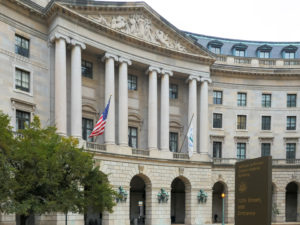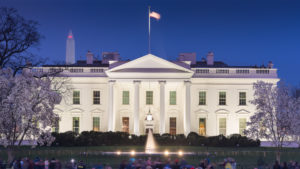The Hill: Courts should interpret unclear laws in favor of freedom, not bureaucratic preference

A federal appeals court in Denver is considering a controversial question: Does a “bump stock” — a firearm add-on that allows bullets to be fired in rapid succession — turn an ordinary rifle into an illegal machine gun? In 2018, the federal agency that regulates firearms concluded that it does. A Utah gun lobbyist sued to challenge the agency’s position in Aposhian v. Barr, a case now pending before the Tenth Circuit Court of Appeals.
But beneath the headline-grabbing gun issue, the case raises an even more important question: When Congress writes a law with more than one possible meaning, how should a court decide which interpretation is correct?
Answering that question will require the Tenth Circuit to resolve a clash between two important rules for how judges interpret unclear laws.
The first is known as the rule of lenity.
Lenity is a fundamental principle of American law passed down for hundreds of years even before our Constitution was adopted. It requires judges to interpret criminal laws in favor of the people and against the government that wrote the laws. So when Congress enacts a criminal law that is genuinely ambiguous (not just imprecise or poorly drafted), lenity requires courts to interpret it narrowly to favor freedom. The tie goes to the citizen.
Although the rule of lenity originated in criminal law, it also applies to the many laws that carry both criminal and non-criminal penalties for the same conduct — such as the prohibition on the possession or use of a machine gun. As one federal judge put it, a law “is not a chameleon” whose meaning can “change from case to case.” The words that Congress enacts into law must be interpreted the same way whether the law is applied criminally or civilly. So if lenity requires a law to be read narrowly, it must be read narrowly in both criminal and non-criminal cases.
The second rule of interpretation is known as agency deference, sometimes called “Chevron deference” after a famous 1984 U.S. Supreme Court case, Chevron U.S.A. v. Natural Resources Defense Council. In that case, the court concluded that when a federal administrative agency interprets an ambiguous statute, courts must follow that interpretation as long as it is reasonable — even if it is not the best or most natural reading of the law. Unlike the rule of lenity, Chevron deference only applies in non-criminal cases.
In the bump-stock case, these two rules conflict. Because the machine gun ban carries criminal penalties, the rule of lenity requires the court to read the law narrowly to exclude bump stocks. But because the agency has interpreted the ban to include bump stocks, Chevron deference requires the court to accept a broader interpretation. So, which rule wins?
The firm I work for, Pacific Legal Foundation, has filed a friend-of-the-court brief arguing that the Tenth Circuit should follow the rule of lenity. That time-honored rule is essential for assuring that the people have fair notice about what is illegal. Equally important, the rule of lenity protects the governmental separation of powers. It requires that the decision about what conduct to criminalize comes from our elected representatives — not from prosecutors who enforce the law, judges who apply the law, or bureaucrats in administrative agencies. The branch of government most accountable to the people is the one that decides what to prohibit.
In contrast, the relatively recent doctrine of Chevron deference undermines the separation of powers by giving federal agencies the power to revise the law — even where the legislature is unwilling to do so. Before the Bureau of Alcohol, Tobacco, Firearms and Explosives issued the challenged bump stock ban in 2018, it had consistently and repeatedly concluded that the legal definition of “machine gun” does not include bump stocks. After the tragic 2017 Las Vegas shooting, in which the shooter reportedly used firearms equipped with bump stocks, Congress considered several bills to prohibit the use or possession of bump stocks. None of those bills succeeded. But faced with public pressure and an order from the president, the bureau decided to change its position and order that bump stocks be banned as machine guns.
In other words, after Congress declined to revise the law, the agency took matters into its own hands. Congress chose not to ban bump stocks, so the agency reversed its position and concluded that they already were banned under existing law. And now it asks the court to defer to its new interpretation.
No matter what you think of bump stocks, this is not how laws should be made, especially when criminal penalties are at stake. The Tenth Circuit should set things right by holding that when the rule of lenity and Chevron deference conflict, the rule of lenity must prevail.
This op-ed was originally published by The Hill on November 2, 2020.











